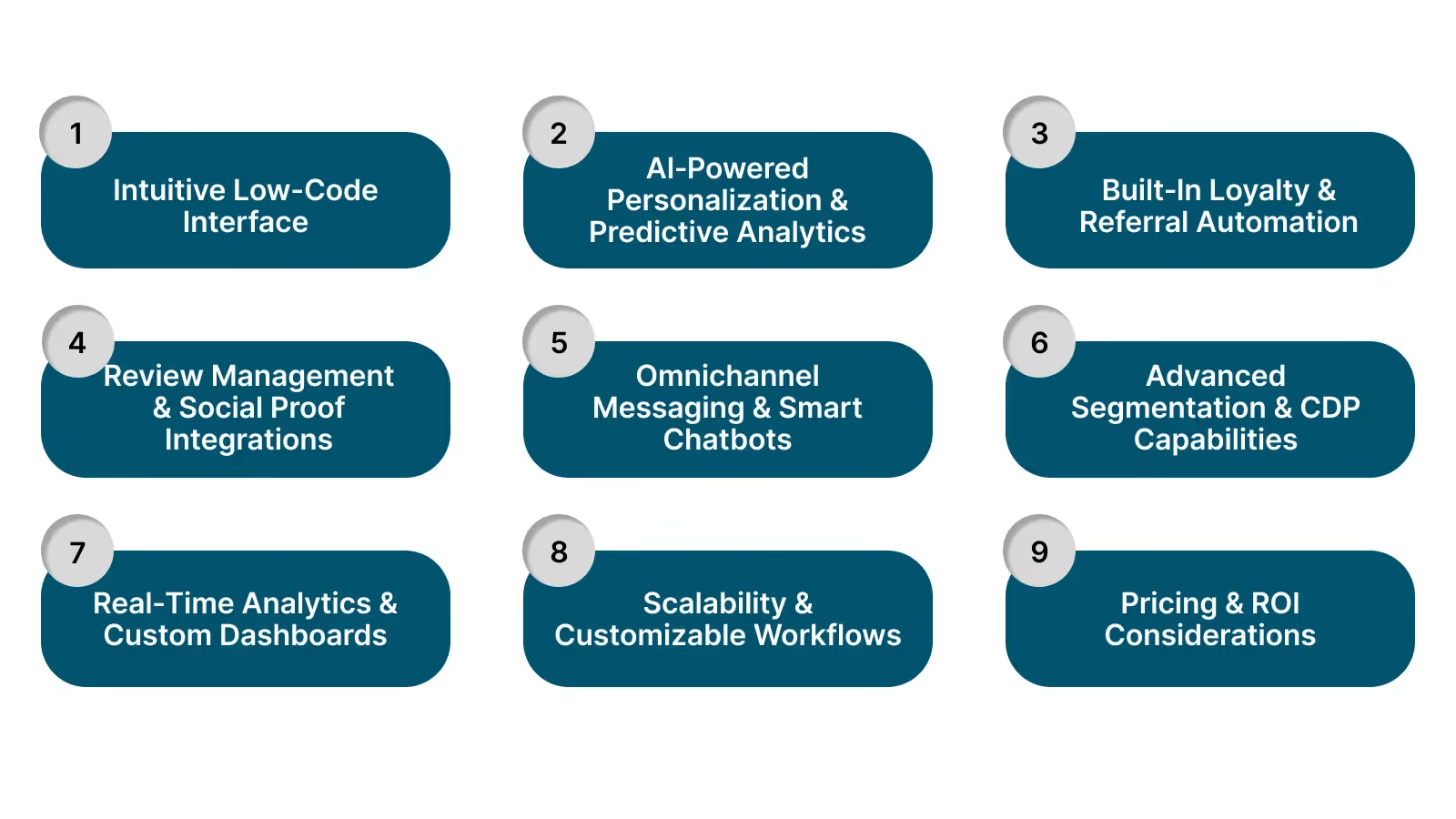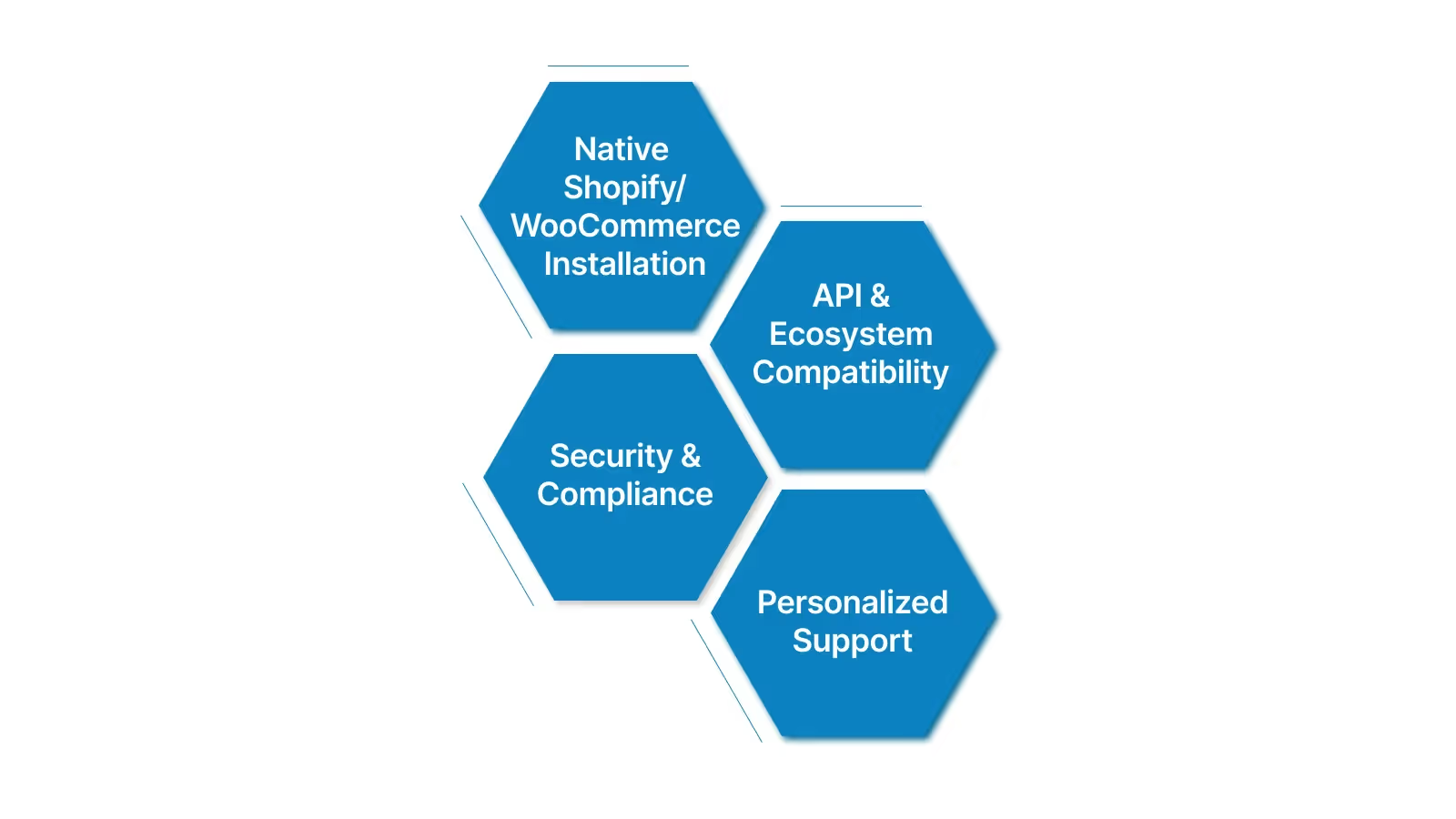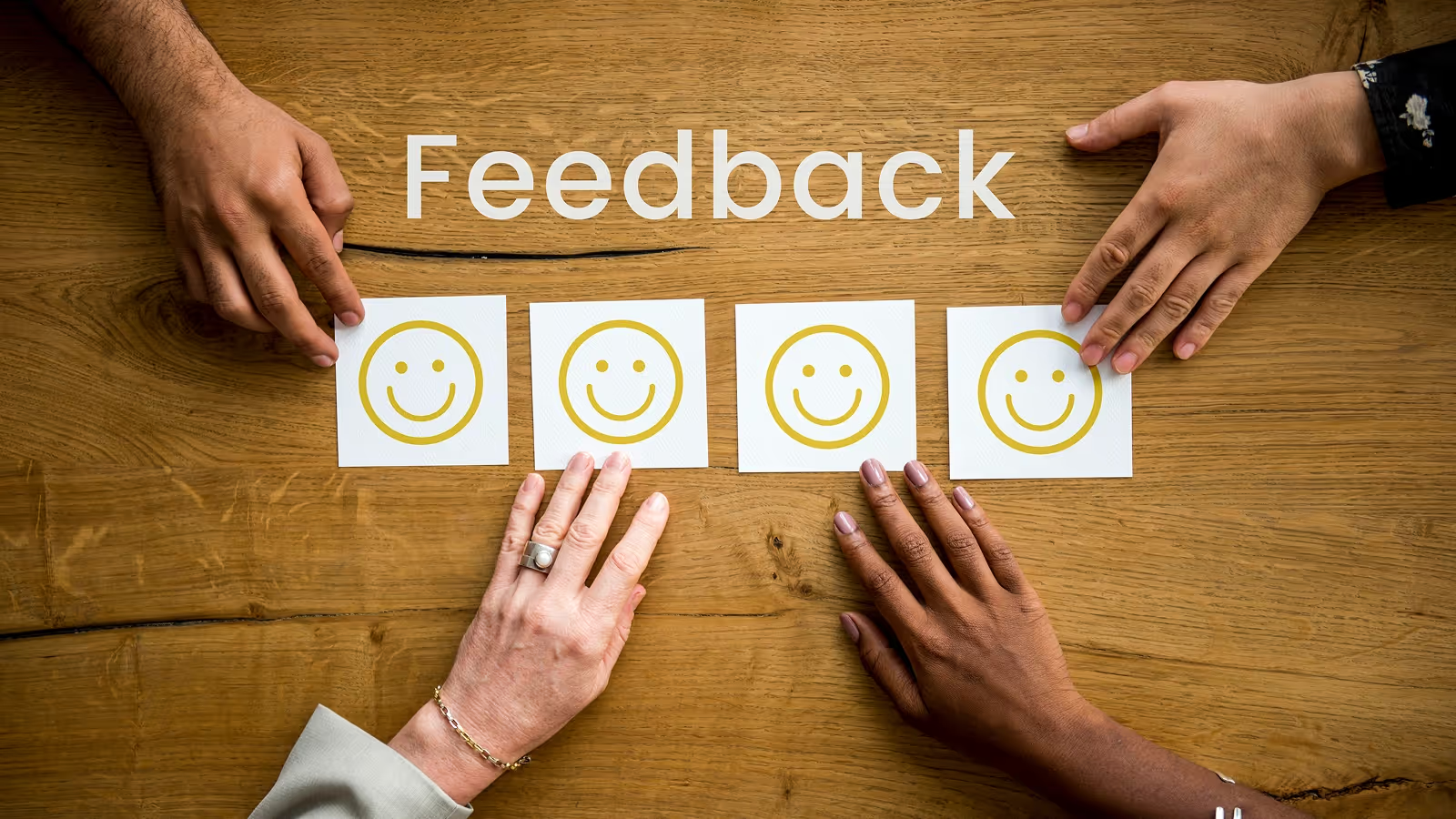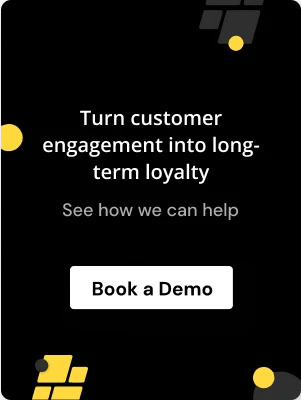.avif)
.avif)
Bringing in new customers is getting more expensive as digital ad costs climb, yet many first-time buyers don’t return. Without a clear post-purchase engagement strategy, average order values can stall, and repeat purchases may stay stuck in the single digits. In fact, acquiring a new customer now costs five times more than retaining an existing one, yet loyalty is powerful: 59% of U.S. consumers say they stay loyal for life once they commit, and 77% have maintained a relationship with at least one brand for over a decade.
A purpose-built engagement platform helps fill this gap. It automates loyalty points, referrals, and reviews, deepening customer relationships, reducing churn, and boosting lifetime value. By syncing data from platforms like Shopify or WooCommerce, it enables personalized interactions and streamlines rewards management, helping small teams drive repeat purchases without leaning on developer bandwidth.
But before we get into the features and checklists, it’s worth pausing to look at what your customers are already telling you, loud and clear, through the data.
Engagement Isn’t Optional, and These Numbers Prove It
- 75% of Gen Z say they’ll leave a brand if their experience isn’t personalized.
- 71% of consumers now expect personalized interactions as a baseline, not a bonus.
- 86% say personalization directly impacts how loyal they feel toward a brand.
- 65% are willing to stick around if you get personalization right.
- And if you still think content is king, 68% of marketers already use user-generated content (UGC) to drive online engagement.
These aren’t just numbers, they’re signals. Your customers are already telling you what matters. The right engagement platform just helps you act on it.
What Is a Customer Engagement Solution?
A customer engagement solution integrates all the ways you connect with customers, whether through email, SMS, chat, social media, or other means. It assists you in creating detailed customer profiles, sending messages at the right time, and tracking their effectiveness. Here are the core components:
- Data Management: Centralize browsing behavior, purchase history, loyalty status, and support tickets into one profile per customer. This single source of truth prevents fragmented campaigns and powers accurate segmentation.
- Messaging Hub: Look for a cloud‑native, omnichannel hub with prebuilt Shopify/WooCommerce connectors. You should be able to launch email, SMS, in‑app, or social campaigns and build automated journeys without writing code.
- Analytics & Automation: Real‑time dashboards must track both opens and clicks, repeat purchase rate, average order value, and loyalty engagement. A visual, drag‑and‑drop workflow builder lets you automate cart abandonment, welcome series, and tier‑based loyalty triggers on behavior or profile changes.
Now that you know the core components, here’s how to tell if your current setup needs a solution.
Read: 5 Key Metrics to Measure Customer Engagement vs. Customer Experience
Signs Your D2C Brand Needs a Solution
- You’re running loyalty redemptions and balance updates by hand.
- Your repeat‑purchase rate has dipped below your category’s 55–85% benchmark.
- Email, SMS, and in-app workflows each reside in separate dashboards, slowing down every campaign launch.
Once you’ve identified the gaps, these are the capabilities you’ll want at your fingertips.
Also Read: Why D2C Brands Need Loyalty Programs: An Introduction to Customer Retention
Key Features to Evaluate

When you focus on these key features below, you'll choose a solution that scales with your growth and turns first-timers into lifetime buyers:
- Intuitive Low-Code Interface: Look for a cloud‑native, drag‑and‑drop setup that lets marketing and sales own campaigns end‑to‑end. Prebuilt templates for emails, SMS, and pop‑ups save you from endless developer tickets.
- AI‑Powered Personalization & Predictive Analytics: It turns real-time customer behavior into tailored recommendations, boosting engagement. By predicting churn risks, businesses can act proactively, enhancing retention and fostering long-term loyalty.
- Built‑In Loyalty & Referral Automation: A robust points engine and tiered‑reward structure should be ready out of the box. Share‑to‑earn workflows that post referral links via email or SMS put new acquisitions on autopilot. Automate point issuance from order events, refunds, or product reviews without custom code.
- Review Management & Social Proof Integrations: Automate review requests post-purchase through email or SMS, and seamlessly display star ratings and testimonials in on-site widgets. Showcasing up-to-date social proof helps build trust and encourages conversions.
- Omnichannel Messaging & Smart Chatbots: A unified inbox that spans email, SMS, WhatsApp, and social media keeps every conversation in one view. Layer in AI chat assistants to handle FAQs, capture leads, or nudge loyal customers toward their next reward tier without manual handoffs.
- Advanced Segmentation & CDP Capabilities: Build segments by purchase frequency, average order value, or loyalty status. A built‑in customer data platform lets you merge web behavior, order history, and referral activity into a single profile, so every message lands in the right inbox.
- Real‑Time Analytics & Custom Dashboards: Track campaign performance, cohort retention, and changes in lifetime value as they happen. Custom dashboards enable users to focus on essential metrics, including repeat purchase rates, point redemption, and referral conversion, without exporting CSV files.
- Scalability & Customizable Workflows: As sales spike during seasonal peaks, you need automation triggers and API hooks that flex with demand. Select a platform that allows you to incorporate custom steps for tagging, segmentation, and bonus-point promotions without disrupting your flows.
- Pricing & ROI Considerations: Assess cost structures and expected ROI by comparing subscription tiers with usage-based plans. Flat fees offer predictable costs, while usage-based models scale with growth. Trial periods and free tiers help validate impact before long-term commitment.
When you pick a solution built around low‑code tools, AI‑driven insights, and loyalty‑first workflows, you’ll free up resources to focus on creative campaigns instead of endless engineering work.
At the forefront of these features, Nector.io offers an all‑in‑one loyalty, referral, and review solution that installs in minutes on Shopify and WooCommerce, requires no developer hours, and supports up to 300 orders per month on its free plan. With responsive support and flexible pricing, Nector.io helps you launch rewards programs, amplify referrals, and collect reviews all from a unified dashboard.
With your feature list in hand, the next step is getting everything up and running without a hitch.
Also Read: 9 Omnichannel Retention Strategies to Keep Your E‑Commerce Customers Engaged

Integration & Deployment

When you’re gearing up to roll out your engagement platform, smooth setup cuts weeks off your timeline:
1. Native Shopify/WooCommerce Installation
You can install the solution as a native app in your Shopify or WooCommerce store with zero custom coding. In most cases, you’ll have the loyalty and referral widgets live on your storefront in under 30 minutes, with no developer hand‑offs or build sprints.
2. API & Ecosystem Compatibility
Whether you’re using Klaviyo for email, Zoko for WhatsApp, or a bespoke checkout flow, the platform’s RESTful APIs and pre‑built connectors mean you won’t rebuild your stack. Sync member data, trigger point issuances from backend events, or extend functionality with webhooks, allowing your marketing and development teams to work in parallel.
3. Security & Compliance
You need peace of mind when handling customer identities and purchase histories. Look for a solution that meets stringent data security standards, think enterprise-grade encryption, SOC 2 compliance, and regular audits. It’s not just about checking a box; it’s about making sure your data practices can scale with your growth.
4. Personalized Support
Even with a turnkey install, every brand’s loyalty strategy has unique twists. Choose a partner offering hands‑on onboarding, bespoke migration assistance, and quarterly optimization reviews. That ensures your program scales alongside your roadmap without leaving you to figure it out on your own.
Turn deployment into a competitive edge with seamless integration and expert support. Installation is just the beginning; follow these best practices to maximize platform usage.
Also Read: Boosting Email Marketing Campaigns through Nector.io and Klaviyo Integration
Implementation Best Practices

To help your team gain the most value from your customer engagement platform, concentrate on structured ramp-up, flexible integration paths, and continuous tuning:
1. Onboarding & Knowledge Resources
You need clear, contextual guidance to accelerate adoption and avoid costly drop-offs. In‑app walkthroughs eliminate guesswork, helping you set up rewards, referrals, and review triggers without sifting through menus. A robust Help Center with searchable articles and community forums means your marketing or sales lead can troubleshoot in minutes, not days.
2. Low‑Code vs Developer APIs
Select drag-and-drop widgets for quick, no-code deployment. Embed loyalty banners, referral pop-ups, or review prompts directly into your Shopify or WooCommerce theme in less than an hour. When you require bespoke flows, say, issuing bonus points after a specific checkout event, leverage APIs to call reward‑issuance endpoints, fetch member profiles, and automate triggers from your back end. This dual approach lets your small‑team marketing lead move fast while preserving full extensibility for future custom logic.
3. Ongoing Support & Optimization
Post‑launch, a dedicated account team guides quarterly analytics reviews, spotlighting which segments drive the highest repeat purchases and where drop‑off occurs. You’ll receive prioritized feature roadmaps that align with your retention goals. Whether that’s rolling out tiered benefits, refining referral incentives, or streamlining redemption UX. Continuous performance monitoring and iterative adjustments ensure your engagement engine evolves as your customers’ expectations shift.
Theory is one thing, but these examples show how other brands make it happen.
Real‑World Results with Nector.io
44× ROI from Loyalty + Referrals:
A popular D2C brand in the home furnishing and gardening space wanted to build stronger customer loyalty and drive organic referrals without increasing marketing costs.
What They Did with Nector.io:
- Set up a VIP tier-based loyalty program that rewards customers for every interaction, such as shopping, referrals, social shares, and more.
- Created a branded Rewards & Loyalty Page that clearly communicates perks and progress, encouraging customers to level up.
- Launched a referral program that makes it easy for customers to refer friends and earn rewards.
Results:
- Achieved a 44× ROI, with 20% successful referrals and 9.45% revenue driven by Nector.
- Higher customer engagement and repeat purchases.
- Word-of-mouth growth driven by easy-to-use referral flows, all without needing engineering support.
32× ROI in 3 Months with “Buy with Coins”
A fashion brand selling apparel and accessories wanted to turn one-time shoppers into long-term customers.
What They Did with Nector.io:
- Built a dedicated Loyalty Program Page on Shopify with a “Buy with Coins” feature.
- Used Nector’s intuitive interface to show customers how they can earn and use points step by step.
Results:
- Achieved 32× ROI on their loyalty investment within just 3 months.
- 12.5% of new users signed up through loyalty flows.
- 7% redemption rate, converting points into actual orders.
Even the best strategies can have pitfalls. Avoid these common mistakes to stay on track.
Also Read: How to Use Data Analytics to Optimize Your Loyalty Program
Pitfalls & How to Avoid Them
.avif)
Avoiding common pitfalls can significantly improve the success of your strategy. Here are the key challenges and how to tackle them:
1. Feature Bloat vs Essential Functionality
You might chase every checkbox on a vendor’s feature list, but feature bloat only makes things harder. It clutters your workflows, drags out onboarding, and often distracts from the core functionality you actually need. The more a tool tries to do, the less likely it is to do any of it well.
Tip to avoid: Focus on solutions that directly support your retention goals, like points management, referral tracking, and real-time analytics, instead of getting distracted by every “nice-to-have” feature.
2. Data Silos from Point Solutions
Stitching together multiple apps often leads to fragmented customer records and blind spots across campaigns. Instead of jumping between tools, brands are moving toward unified ecosystems built on centralized customer data, breaking down silos and enabling more consistent and personalized experiences.
Tip to avoid: Focus on platforms that feature an integrated customer data layer or CDP integration. Ensure all connected channels contribute data to a central profile store and map out your data flows in advance to prevent any events or profile fields from being lost.
3. Hidden costs in add‑ons or long‑term contracts
A low headline price can balloon once you tack on extra seats, premium connectors, or annual auto‑renewals. The Controllers Council highlights that unused licenses, overlapping tools, and locked‑in contracts can add up faster than expected.
Tip to avoid: Ask for a detailed quote that includes seats, connectors, support options, and renewal terms. Negotiate seat number reviews every three months and pay for modules as needed. Try to include a contract escape clause or choose month-to-month billing.
By staying alert to these pitfalls, you can make more informed decisions and maximize the value you gain from your tools and systems.

Why Nector.io is the Perfect 2025 Customer Engagement Solution
As you’ve seen, a purpose‑built engagement solution closes the gap between checkout and repeat purchase by centralizing data, automating loyalty points, referrals, and reviews, and delivering AI‑driven personalization without a single line of code. Nector.io takes those capabilities further:
- Low‑Code Interface: Drag‑and‑drop workflows and prebuilt templates for email, SMS, pop‑ups, and in‑app journeys let you launch campaigns in minutes.
- AI‑Powered Personalization: Real‑time behavior feeds tailored product recommendations and churn‑risk predictions so you can reach out before customers slip away.
- Built‑In Loyalty & Referral Engine: A tiered points system, share‑to‑earn workflows, and automatic point issuance keep customers engaged and bring their friends along.
- Review Management: Automated post‑purchase review requests and on‑site testimonial widgets build trust, reinforce social proof, and nudge visitors to convert.
- Omnichannel Messaging & Smart Chatbots: Email, SMS, WhatsApp, and social all flow into one inbox, with AI helpers handling FAQs and next‑step prompts for your most valuable customers.
- Real‑Time Analytics: Custom dashboards track repeat purchase rates, average order values, point redemptions, and referral conversions, with no CSV exports required.
Install on Shopify in under 30 minutes, activate the free plan (up to 300 monthly orders), and let our intuitive setup guide you through loyalty, referral, and review workflows.
FAQs
What’s the difference between a CRM and a customer engagement platform?
A CRM centralizes contact records and sales processes, while an engagement platform uses that unified data to automate real‑time, personalized outreach across email, SMS, chat, social, and more.
How do you measure the ROI of a customer engagement solution?
Compare incremental revenue from repeat purchases, increased CLV, and reduced churn against subscription and implementation costs using ROI = (Value – Cost) / Cost × 100.
How long does it take to see measurable results from a customer engagement platform?
Most teams report a noticeable lift in retention and engagement metrics within four to six weeks after activating automated journeys.
What are the top metrics to track for evaluating the success of a customer engagement solution?
Focus on conversion rate, repeat purchase/retention rate, average order value, Net Promoter Score, and churn rate.
Can a customer engagement platform replace existing CRM and marketing automation tools?
Engagement platforms extend CRM data for richer, event‑driven campaigns but don’t replace core sales pipelines or specialized automation best used alongside your CRM and marketing stack.
Start Building Customer Retention That Lasts









